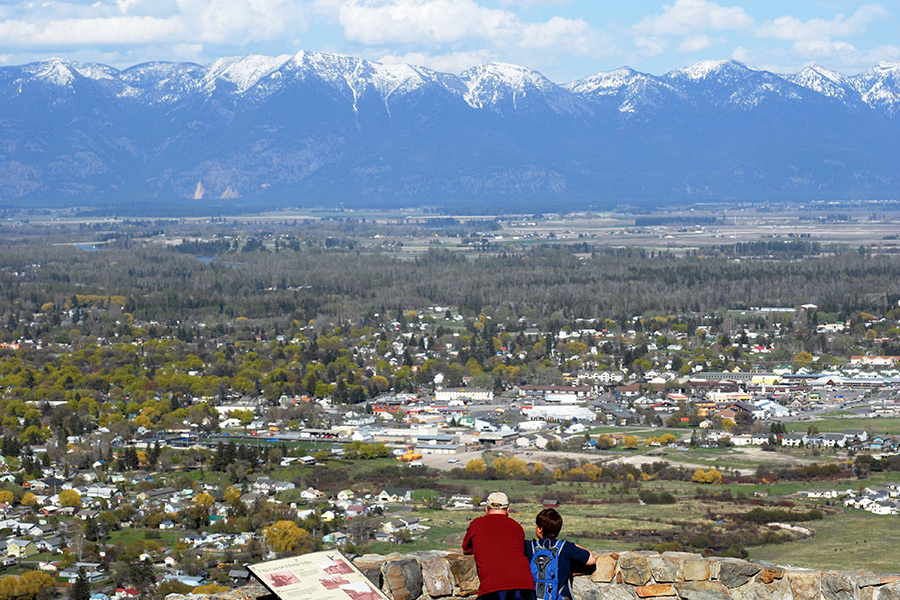After a brief period of stalled growth, Flathead County’s population is rising at a high rate reminiscent of the pre-recession rush, according to the latest data from the U.S. Census Bureau.
Flathead County saw an uptick of 1,799 residents last year, the largest year-over-year population increase since 2008, when this was one of the fastest growing areas in the state.
The population picked up steam the last two years after flatlining from 2009-2012, when the county gained only 1,458 residents. The growth in 2013 almost matched that entire four-year span with 1,433 residents.
According to census estimates, Flathead County has gained the third most people — 3,323 — among Montana’s largest counties since 2012. Gallatin County has jumped 4,704 and Yellowstone County has risen 3,746.
Previous projections showed Flathead County, which has 94,924 residents last year, could hit 100,000 residents in 2018, but the recent increase could move up the milestone to within a couple years, according to census data.
Local hospitals are delivering babies at record rates. North Valley Hospital in Whitefish delivered a record 520 babies in fiscal year 2015, according to administrators. The previous record was 500. The hospital is in the process of expanding its birth center to accommodate current and projected growth. The new rooms are expected to be ready by Labor Day.
“It’s really amazing,” Cindy Walp, birth center manager at North Valley Hospital, said. “We were built for 250 babies. And doing over 500 has really been an interesting process.”
The birth center at Kalispell Regional Medical Center is experiencing a similar baby boom. From Jan. 1 through July 8, there were already 407 babies delivered. The average for the whole year is roughly 500, according to hospital administrators.
Flathead County could use the infusion of youth.
A closer examination of the local population figures reveals a few interesting trends, particularly involving the aging demographics and evolving labor force.
The Flathead’s reputation as a favorable destination for retirees is proving credible. The largest percentage of new residents — 24.3 percent — is 65 and older.
“Flathead County is attractive for retirees and it’s a desirable area with a lot of amenities,” said Joe Ramler, senior economist with the Montana Department of Commerce Census and Economic Information Center.
The county also has a large segment — over 8,000 residents — who are 55 to 59 years old, meaning they are approaching retirement age. According to experts, the same situation is playing out across Montana and could disrupt the labor force and create a worker shortage in the coming years.
“The Baby Boomer population is so much larger than the other population segments, and they’re now exiting the labor force,” said Barb Wagner, chief economist with the state’s Department of Labor and Industry Research and Analysis Bureau. “We’re anticipating a pretty tight labor market in the next few years.”
The influx of retirees could stall economic growth in the Flathead and across Montana because there are not enough younger people to replace the retiring Baby Boomers, research shows. Montana is already down to 3.9 percent unemployment but projections show slower job growth in the next 10 years, according to Wagner.
“This is a real challenge for the state as a whole,” Wagner said.
Montana ranks 18th best in the nation for employment-to-population ratio with 61.8 percent, which is above the national average for residents over 16 having jobs. Among the population that is not working, people tend to fall in a few categories: people under 20, retirees, stay-at-home caregivers and those who are disabled, according to state statistics.
On the bright side, a possible worker shortage could help Montana’s average wages increase. The state’s wages historically rank among the lowest in the nation, but data released recently shows personal income growth accelerated in the last quarter of 2014 and first quarter of 2015. The state’s personal income growth in the first three months of 2015 was among the fastest in the nation, with Montana experiencing income growth of 1.2 percent. The nation’s wage growth has been tepid in recent years, though.
Flathead County Population Growth
Year Population Change Since Previous Year
2004 81,247 (+1,604)
2005 83,320 (+2,073)
2006 85,759 (+2,439)
2007 88,245 (+2,486)
2008 90,260 (+2,015)
2009 90,910 (+650)
2010 90,928 (+18)
2011 91,222 (+320)
2012 91,692 (+470)
2013 93,125 (+1,433)
2014 94,924 (+1,799)
Source: U.S. Census Bureau Population Division. Population figures between 2004-10 were verified through the 2010 Census. The figures since 2011 are estimates.
